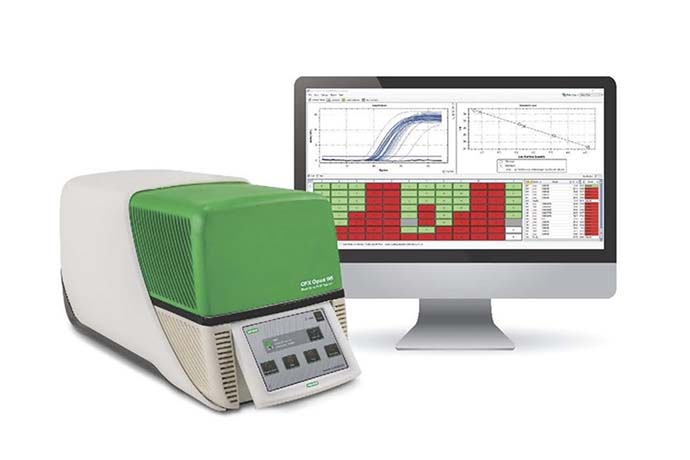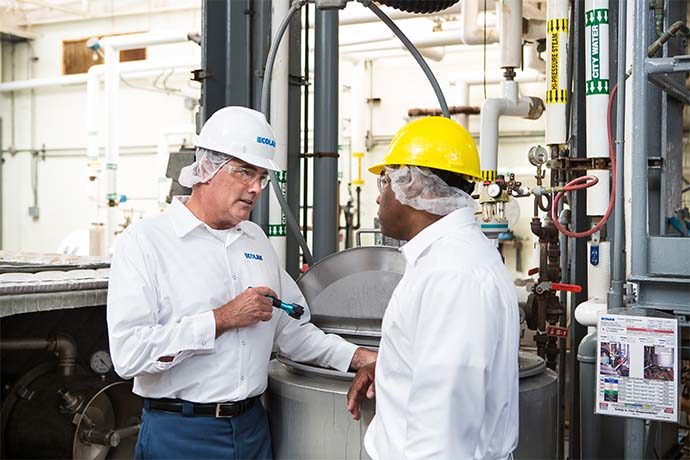In recent years, there have been great advances in sanitary design and an increased focus on reducing the risk of Listeria on products and in the plant environment. Moreover, there have also been significant advances in the ability to detect and isolate Listeria in processing plants.
Even so, while the meat and poultry industry is doing a better job of controlling the pathogen, Listeria positive environmental samples are not exactly decreasing at a parallel rate. This may be interpreted as Listeria is becoming more of an issue. However, that is not looking at the situation from a practical or pragmatic view. Listeria detection methods are constantly getting more sensitive for identifying the pathogen, meaning that the tests are ever increasing in their ability to detect the pathogen if present.
John Butts, PhD, founder and principal of St. John, Ind.-based FoodSafetyByDesign, noted that when Listeria becomes a resident in a meat and poultry facility, it can harbor in the equipment and contaminate products and detecting it requires proven strategies.
“The seek-and-destroy process starts with an investigation and identifies the organism very deeply in the equipment,” he said. “If found, you can determine how to manage the organism. Effective cleaning and sanitation are necessary.”
Regular testing, frequent monitoring and effective sanitation practices are the most important preventative actions food producers can take to control Listeria contamination in their food facilities.
“Prevention occurs through the constant assessment of the plant, including equipment and the environment, for Listeria harborage points,” said Jeremy Alder, technical hotline leader for Saint Paul, Minn.-based Ecolab, whose cleaning products remove Listeria and Listeria-containing soils from equipment and environmental surfaces. “This includes sanitary design checklists and environmental monitoring programs.”
It’s also important to ensure that the food ingredients and processing equipment brought into the plant are not introducing Listeria into the environment, so regularly testing incoming raw materials and equipment is also a crucial preventative action producers can take to control potential contamination.
Tough to defeat
One of the key challenges with Listeria when detected in plants, especially in cold and wet facilities, is its ability to survive in very cold temperatures and wet surfaces such as floors, drains and sometimes even on food contact surfaces such as processing equipment.
Listeria is also a hardy bacterium that can withstand many commonly used sanitation chemicals especially when they have formed a biofilm layer.
“Biofilms are formed when structures of bacterial cells are protected by a self-produced matrix that firmly embeds itself to hard surfaces and even food products,” said Helen Fong, international product manager for molecular food diagnostics at Bio-Rad. “This protective matrix protects the Listeria cells from sanitizers including quaternary ammonium-based, acid-based and even ethanol-based cleaning chemical agents.”
For these reasons, Listeria can present challenges for food production plants to manage and eliminate once carried into the facility.
Alder noted that inexperience can also be a problem.
“A plant that is less mature is not actively looking for Listeria and has a ‘head in the sand’ approach to finding Listeria,” he said. “When pressed, one usually finds that these plants don’t have Listeria positives because they don’t actively look for Listeria. Additionally, they are reactive to Listeria positives. They tend not to act until there is a positive.”
 Technology tools from Bio-Rad help processors manage and measure contamination risks in plant environments. (Source: Bio-Rad)
Technology tools from Bio-Rad help processors manage and measure contamination risks in plant environments. (Source: Bio-Rad)Improving detection
Alder noted that a plant that has a mature level of Listeria control is actively looking to find Listeria positives. They are constantly analyzing equipment and addressing Listeria harborage issues or designing the plant and equipment for optimal sanitary design to control Listeria.
“These plants are constantly predicting Listeria issues and addressing them before positives happen,” he said. “Listeria positives result in a robust corrective action approach with measures being implemented that prevent reoccurrence.”
Bio-Rad Laboratories, which handles things on the testing side, offers real-time PCR kits for the detection of Listeria spp. and Listeria monocytogenes that provide accurate, easy-to-use and fast time-to-results in both environmental samples and food samples.
The iQ-Check Listeria spp. is most commonly used for environmental testing and provides results in as little as 18 hours post enrichment. The iQ-Check Listeria monocytogenes II kit can also be used for environmental testing and food product testing and targets the harmful pathogenic Listeria that causes listeriosis, a harmful and sometimes even deadly disease that most commonly affects babies, pregnant women and immunocompromised individuals.
Fong said that regular and frequent monitoring, environmental testing and cleaning are key actions food producers can take to improve the detection of Listeria in their facility.
“Environmental testing typically involves swabbing both food contact and non-food contact surfaces to monitor the presence of environmental pathogens, such as Listeria spp. and Listeria monocytogenes, during pre-sanitation and post-sanitation to ensure that the target pathogen is eliminated from the problem zone,” she said.
Another common method to test and monitor for Listeria in plants is using the Zone 1-4 method. This involves environmental swabbing in sectioned “zones” of the plant, where Zone 1 surfaces called food contact surfaces that are at the highest risk for product contamination and Zone 4 surfaces called non-food contact surfaces that are at the lowest risk for product contamination are continuously tested and monitored to identify the target area so producers can strategically eliminate the target pathogen.
“Faster turnaround time on the Listeria test method is also a crucial component to ensure that food producers can respond to a problematic area quickly and prevent the target pathogen from contaminating the food product,” Fong said.
Getting the job done
EcoLab’s sanitizing products inactivate viable Listeria in the plant and stop cross contamination of products.
“As part of our value-added service, we have a team of Listeria experts that can help plants identify and address Listeria issues before they happen through sanitary design audits,” Alder said. “These process experts can provide vital information during the root cause analysis performed after a Listeria positive. Additionally, they can help design the preventative measure to ensure the Listeria has been resolved and will not occur.”
Swabbing tools such as the World Bio-Products HiCap Sponges are also useful tools that are specially designed and validated to pick up any residual microbial contaminants.
Micreos Food Safety, based in Wageningen, Netherlands, markets PhageGuard products against food pathogens such as Listeria.
“Phages are able to penetrate biofilms due to their small size and great stability,” said Robbert-Jan Mulder, product manager of the company. “It detects its target and subsequently eliminates the Listeria. Phages do not affect color, taste, texture or odor of the final product and are harmless to humans, plants and animals.”
He noted that hotspots such as drainage systems, chillers and freezers should be checked regularly as part of a comprehensive detection plan.
The rising complexity in the food chain, the need for speed of production, the public health demands, the unavoidable refrigerated conditions and the omnipresence of Listeria are not going away and it must be detected and prevented the best it can.



